#jordanian politics
Text
🇯🇴🇵🇸 🚨
THOUSANDS OF JORDANIANS FLOOD THE ZIONIST EMBASSY IN PROTEST OF GENOCIDE IN GAZA
📹 Thousands of Jordanians flood the streets in the vicinity of the Zionist embassy in Amman, the Jordanian capital on Thursday night.
Protestors rallied in front of the Israeli entity's embassy in Amman, demanding an end the Zionist genocide of Palestinians in the Gaza Strip, while local Jordanian forces restrain the crowds from storming the embassy.
#source
@WorkerSolidarityNews
#gaza#jordan#jordan protests#gaza protests#palestine protest#protests#jordan news#jordanian news#jordanian politics#israel#gaza strip#palestine#free palestine#free gaza#israeli occupation#israeli genocide#genocide#genocide in gaza#politics#news#geopolitics#world news#global news#international news#war#breaking news#current events#israel palestine conflict#palestine news#palestinians
663 notes
·
View notes
Text
Brazil, Jordan strengthen ties in fertilizer sector
This week, the Arab Brazilian Chamber organized a schedule in Brasília with discussions between government and agribusiness representatives on increasing cooperation in the sector. The Jordanian embassy and Arab Potash company participated. The Arab country is a major producer of potassium.

The possibility of expanding trade in fertilizers between Jordan and Brazil was the subject of a schedule of events organized by the Arab Brazilian Chamber of Commerce (ABCC) this week in the Brazilian national capital Brasília. The institution promoted meetings between the Jordanian Embassy in Brazil and the Arab Potash Company with the Brazilian Ministry of Agriculture and Livestock and the Brazilian Confederation of Agriculture and Livestock (CNA).
According to the Institutional Relations advisor of the ABCC, Bassel Abou Latif, the goal was to encourage and expand cooperation in fertilizers between Brazil and Jordan, especially after the opening of the Arab Potash regional office for Brazil and Latin America in São Paulo. The Jordanian ambassador to Brasília, Maen Masadeh, the deputy ambassador of Jordan to Brasília, Faris Al Adwan, and the director of the Arab Potash office in São Paulo, Firas Momani, and Latif participated in the events.
At the Ministry of Agriculture, the group was welcomed by the general coordinator of Foreign Investments Attraction & International Cooperation, Luiz Caruso; the coordinator of Foreign Investments, Reinaldo Vergara; and the senior researcher of the Brazilian Agricultural Research Corporation (Embrapa), José Carlos Polidoro.
Continue reading.
#brazil#politics#jordan#brazilian politics#jordanian politics#economy#farming#international politics#foreign policy#carlos favaro#mod nise da silveira#image description in alt
0 notes
Text
Currently live in Jordan and I messaged my friend panicking because there were some wierd ass noises outside, my friend oh so helpfully told me they're likely missiles so I panicked because those aren't on the schedule but now scrolling through Twitter apparently they're Israeli aircraft so yeah I'm doing just fucking fabulous, WHY IS THERE SO LITTLE INFORMATION
Anywyas at least my friend got a front row seat to the shit that's going down here, there were multiple rounds of those wierd ass noise but only one time did it get like rlly fucking loud
Do y'all think maybe we'll get school off because of this???? Idk I'm just hoping for a bright side to whatever just happened
I'll try to update as much as I can even if nobody ends up reading these
Update: there's more noises
#Jordan#jordanian royal family#Jordanian#🇯🇴#palestine#free palestine#from the river to the sea palestine will be free#iran#jordan news#world news#politics#idk im just tagging everything#vent post#vent#tw vent#missiles#middle east#arabic#middle east news#sorry if i clogged up any tahs or tagged wrong im just#rattled rn#help
3 notes
·
View notes
Text

March 28. Taleed El-Sabawi, JD, PhD writes: "Jordan should be trending right now. Protests have been blocking traffic; men have flooded the streets in such large numbers that even the repressive military force in Jordan can’t beat them into submission (something they frequently do); Protesters are chanting for Jordan to open its borders so they can march to Al-Aqsa. The political unrest in Jordan has been at a boiling point for years now.
High rates of unemployment particularly among young men; significant inflation; high housing costs; low wages; skyrocketing gas prices, electricity, groceries…hardly any industry. Repressive import taxes.
And a monarchy that pockets millions of US government aid in exchange for US military access. The monarchy is now holding on by a thread.
Expect the Jordanian forces to increase their violence against protestors. Expect the U.S. to send in reinforcements in some shape or form—If the monarchy falls, it will not be a U.S. co-opted government that will organically take its place. It will not be an Israel friendly government. Expect the U.S. to meddle as they always have & to do everything they can to keep the monarchy in place.
Even a UN Ceasefire isn’t enough to make Israel ceasefire or the U.S. to call for Israel to ceasefire. The calculus has changed. The people are reminded yet again how the governments of the world have failed them. Expect more of this around the world.
Every time there are protests in Jordan, I call my family in Amman to get a sense of how serious it is, because my grandparents are in Amman. Since October, every time I call they have brushed it off as young men being young men. Skirmishes with the armed guard as usual. But today was different. They spoke about not being able to drive in the streets, of the chaos, of the sheer number of human bodies, of the determination to do something to help Gaza—something has changed. This time, it feels different.
Additional important context: Jordan was created in 1946. When Britain divided up the Arab World into nation states. Before that there was free movement & a greater degree of one-ness. So when Jordanians say they there is no difference between us and the Palestinian people or that we are the same people , it is because the British creation of nation states was a Western government forcing the Arab people into its Western constructs.
[about further protests in Jordan] There are already plans to start again —at Maghreb tomorrow (sunset)—at the Israeli embassy and doing a sit-in again until dawn, interspersed with prayers. Tomorrow will mark day 5 of protests in Amman."
2K notes
·
View notes
Text
Gilas Pilipinas: Pagkukulang ni Coach Chot at mga Dapat Gawin para sa World Cup
via IFTTT
youtube
View On WordPress
#12 rebounds#and it seems that the selection process is biased towards famous and influential players. The PBA only cooperates in adjusting its schedule#and it took coach Reyes an entire half to realize that June Mar Fajardo was a liability against the nimble Jordanians. The coaching staff&0#and three assists#but Reyes didn&039;t choose him because he&039;s not his favorite. Reyes didn&039;t even speak to Winston#gilas#Gilas Pilipinas: Pagkukulang ni Coach Chot at mga Dapat Gawin para sa World Cup Chot Reyes thinks that Scott Thompson can learn from his mis#jessica sojo#kapuso mo#kmjs#leaving players from other teams like Raymond Almazan and Chris Newsome unavailable for Gilas. Politics and favoritism seem to have influenc#nba#noypi alliance#pba#tulfo#while Kiefer Ravena had zero points. Schonny Winston was available and doing well in practice#Youtube
0 notes
Text
black & palestinian solidarities
if you support black liberation but are unsure of your stance on palestinian resistance, here’s a reminder that they are deeply intertwined. after the 1917 balfour declaration by the british government announcing the first support for a zionist state in palestine, zionism and israeli occupation of palestine have followed similar ideologies and practices to white supremacist settler colonial projects, so solidarity between black and palestinian communities has grown over time, seeing each other as fellow anti-imperialist and anti-racist struggles. (if you get a paywall for any of the sources below, try searching them in google scholar.)
palestinians have been inspired by and shown support for black liberationist struggles as early as the 1930s, when arabic-language newspapers in palestine wrote about the struggle by black folks in the united states and framed it as anti-colonial, as well as opposing the 1935 invasion by fascist italy of ethiopia, the only independent black african state at the time. palestinian support for black struggles grew in the 1960s with the emergence of newly-independent african states, the development of black and third world internationalisms, and the civil rights movement in the united states. palestinian writers have expressed this solidarity too: palestinian activist samih al-qasim showed his admiration for congolese independence leader patrice lumumba in a poem about him, while palestinian poet mahmoud darwish’s “letters to a negro” essays spoke directly to black folks in the united states about shared struggles.
afro-palestinians have a rich history of freedom fighting against israeli apartheid, where they face oppression at the intersections of their black and palestinian identities. some families trace their roots back hundreds of years, while others came to jerusalem in the nineteenth century from chad, sudan, nigeria, and senegal after performing the hajj (the islamic pilgrimage to mecca) and settled down. still others came to palestine in the 1940s specifically to join the arab liberation army, where they fought against israel’s ethnic cleansing of palestinians during the 1948 nakba (“catastrophe”). afro-palestinian freedom fighter fatima bernawi, who was of nigerian, palestinian, and jordanian descent, became, in 1967, the first palestinian woman to be organize an operation against israel, and subsequently the first palestinian woman to be imprisoned by israel. the history of afro-palestinian resistance continues today: even as the small afro-palestinian community in jerusalem is highly-surveilled, over-policed, disproportionately incarcerated, and subjected to racist violence, they continue to organize and fight for palestinian liberation.
black revolutionaries and leaders in the united states have supported the palestinian struggle for decades, with a ramp-up since the 1960s. malcolm x became a huge opponent of zionism after traveling to southwest asia and north africa (SWANA), publishing “zionist logic” in 1964, and becoming one of the first black leaders from the united states to meet with the newly formed palestine liberation organization. the black panther party and the third world women’s alliance, a revolutionary socialist organization for women of color, also supported palestinian resistance in the 1970s. writers like maya angelou, june jordan, and james baldwin have long spoken out for palestinians. dr. angela davis (who received support from palestinian political prisoners when she was incarcerated) has made black and palestinian solidarity a key piece of her work. and many, many more black leaders and revolutionaries in the united states have supported palestinian freedom.
while israel has long courted relationships with the african union and its members, there has been ongoing tension between them since at least the 1970s, when all but four african states (malawi, lesotho, swaziland, and mauritius) cut off diplomatic ties with israel after the 1973 october war. while many of those diplomatic relationships were reestablished in subsequent decades, they remain rocky, and earlier this year, the african union booted an israeli diplomat from their annual summit in addis ababa, ethiopia, and issued a draft declaration on the situation in palestine and the middle east that expressed “full support for the palestinian people in their legitimate struggle against the israeli occupation”, naming israeli settlements as illegal and calling for boycotts and sanctions with israel. grassroots organizations like africa 4 palestine have also been key in the BDS (boycott, divestment, sanctions) movement.
in south africa, comparisons between israel and south african apartheid have been prevalent since the 1990s and early 2000s. israel historically allied with apartheid-era south africa, while palestinians opposed south african apartheid, leading nelson mandela to support the palestinian liberation organization as "fighting for the right of self-determination"; over the years his statements have been joined by fellow black african freedom fighters like nozizwe madlala-routledge and desmond tutu. post-apartheid south africa has continued to be a strong ally to palestine, calling for israel to be declared “apartheid state”.
black and palestinian solidarities have continued into the 21st century. palestinian people raised money to send to survivors of hurricane katrina in the united states in 2005 (which disproportionately harmed black communities in new orleans and the gulf of mexico) and the devastating earthquake in haiti in 2010. in the past decade, the global black lives matter struggle has brought new emphasis to shared struggles. prison and police abolitionists have long noted the deadly exchange which brings together police, ICE, border patrol, and FBI agents from the united states to train with soldiers, police, and border agents from israel. palestinian freedom fighters supported the 2014 uprising in ferguson in the united states, and shared strategies for resisting state violence. over a thousand black leaders signed onto the 2015 black solidarity statement with palestine. the murder of george floyd by american cops in 2020 has sparked further allyship, including black lives matter protests in palestine, with organizations like the dream defenders making connections between palestinian and black activists.
this is just a short summary that i came up because i've been researching black and asian solidarities recently so i had some sources on hand; there's obviously so much more that i haven't covered, so please feel free to reblog with further additions to this history!
#free palestine#black liberation#black and palestinian solidarity#black and asian solidarity#original
633 notes
·
View notes
Note
Ignorant westerner here, but what's the difference between the people of Jordan and the Palestinians aside from who is governing who?

Zuheir Mohsen, former PLO leader:
"The Palestinian people does not exist. ... In reality today there is no difference between Jordanians, Palestinians, Syrians and Lebanese. Only for political and tactical reasons do we speak today about the existence of a Palestinian people, since Arab national interests demand that we posit the existence of a distinct "Palestinian people" to oppose Zionism. For tactical reasons, Jordan ... cannot raise claims to Haifa and Jaffa, while as a Palestinian, I can undoubtedly demand Haifa, Jaffa, Beer-Sheva and Jerusalem. However, the moment we reclaim our right to all of Palestine, we will not wait even a minute to unite Palestine and Jordan."
Auni Bey Abdul-Hadi, Syrian Arab leader to British Peel Commission, in 1937:
“There is no such country as Palestine. ‘Palestine’ is a term the Zionists invented. There is no Palestine in the Bible. Our country was for centuries part of Syria. ‘Palestine’ is alien to us. It is the Zionists who introduced it”
Walid Shoebat, in 1967:
"we considered ourselves Jordanian until the Jews returned to Jerusalem. Then all of a sudden we were Palestinians - they removed the star from the Jordanian flag and all at once we had a Palestinian flag.”
#israel#palestine#there isnt any jfbqjhbfjqhb#the star on the flag sure#one calls itself 'hashemite' and thats pretty much it
156 notes
·
View notes
Text
"The North Korean regime in the ‘50s developed a series of remarkably effective torture techniques, techniques that were so effective, in fact, that they were able to make captured American airmen admit to all sorts of atrocities they had not in fact committed, all the time, being convinced they had not, actually, been tortured. The techniques were quite simple. Just make the victim do something mildly uncomfortable—sit on the edge of chair, for example, or lean against a wall in a slightly awkward position—only, make them do it for an extremely long period of time. After eight hours the victim would be willing to do virtually anything to make it stop. But try going to the International Court of Justice at The Hague and tell them you’ve been made to sit on the edge of a chair all day. Even the victims were unwilling to describe their captors as torturers. When the CIA learned about these techniques—according to Korean friends of mine, they’re actually just particularly sadistic versions of classic Korean ways of punishing small children—they were intrigued, and, apparently, conducted extensive research on how they could be adopted for their own detention centers.
Again, sometimes, in Palestine, one feels one is in an entire country that’s being treated this way. Obviously, there is also outright torture, people who are actually being shot, beaten, tortured, or violently abused. But I’m speaking here even of the ones that aren’t. For most, it’s as if the very texture of everyday life has been designed to be intolerable—only, in a way that you can never quite say is exactly a human rights violation. There’s never enough water. Showering requires almost military discipline. You can’t get a permit. You’re always standing in line. If something breaks it’s impossible to get permission to fix it. Or else you can’t get spare parts. There are four different bodies of law that might apply to any legal situation (Ottoman, British, Jordanian, Israeli), it’s anyone’s guess which court will say what applies where, or what document is required, or acceptable. Most rules are not even supposed to make sense. It can take eight hours to drive 20 kilometers to see your girlfriend, and doing so will almost certainly mean having machine guns waved in your faces and being shouted at in a language you half understand by people who think you’re subhuman. So you do most of your dalliance by phone. When you can afford the minutes. There are endless traffic jams before and after checkpoints and drivers bicker and curse and try not to take it out on one another. Everyone lives no more than 12 or 15 miles from the Mediterranean but even on the hottest day, it’s absolutely impossible to get to the beach. Unless you climb the wall, there are places you can do that; but then you can expect to be hunted every moment by security patrols. Of course teenagers do it anyway. But it means swimming is always accompanied by the fear of being shot. If you’re a trader, or a laborer, or a driver, or a tobacco farmer, or clerk, the very process of subsistence is continual stream of minor humiliations. Your tomatoes are held and left two days to rot while someone grins at you. You have to beg to get your child out of detention. And if you do go to beseech the guards, those same guards might arbitrarily decide to hold you to pressure him to confess to rock-throwing, and suddenly you are in a concrete cell without cigarettes. Your toilet backs up. And you realize: you’re going to have to live like this forever. There is no “political process.” It will never end. Barring some kind of divine intervention, you can expect to be facing exactly this sort of terror and absurdity for the rest of your natural life."
-David Graeber, Reflections from a Visit to the West Bank
141 notes
·
View notes
Text
Jordan said on Monday it was leaving "all options" open in its response to what it called Israel's failure to discriminate between military and civilian targets in its intensifying bombardment and invasion of the Gaza Strip.
Prime Minister Bisher al Khasawneh did not elaborate on what steps Jordan would take, days after it recalled its ambassador from Israel in protest at Israel's offensive in Gaza [...]
Jordan also announced last week that Israel's ambassador, who left Amman shortly after Hamas' attack, would not be allowed to come back, effectively declaring him persona non grata.
"All options are on the table for Jordan in our dealing with the Israeli aggression on Gaza and its repercussions," Khasawneh, whose country signed a peace treaty with Israel in 1994, told state media.
Khasawneh said Israel's siege of the densely populated Gaza was not self-defence as it maintains. "The brutal Israeli attack does not discriminate between civilian and military targets and is extending to safe areas and ambulances," he said.
In a statement, Israel's foreign ministry said the country's "relations with Jordan are of strategic importance to both countries and we regret the inflammatory statements from Jordan's leadership."
Jordan is reviewing its economic, security and political ties with Israel and may freeze or revoke parts of its peace treaty if the Gaza conflict worsens, diplomats familiar with Jordanian thinking said.[...]
Foreign Minister Ayman Safadi said any move to drive Palestinians across to Jordan, which shares a border with the West Bank, was a "red line" amounting to a declaration of war.
"Any attempt to expel Palestinians in an attempt by Israel to change geography and demography we will confront," Safadi said last week.
The Jordanian army has already fortified its positions along its borders, security sources said.
6 Nov 23
116 notes
·
View notes
Note
In keeping with the whole idea of double standards for Israel, I have no idea how it is possible that Israel can be an apartheid state and yet Jordan isn’t? In either case I don’t think apartheid is the right word but if anything there seems to be a better argument for Jordan having apartheid against their Palestinian population then Israel does (seeing as Gaza and West Bank are not actually part of Israel and Arab citizens in Israel have equal rights)
Discussing how arbitrarily Jordan treats Palestinians just forces one to confront how embarrassingly, transparently fake a country Jordan is. I don't like to "go there" because it's pointless, obsolete politics - Jordan should have been Palestine but it isn't, and we have to move on. But since you asked:
If you met them on the street in 1946, could anyone identify differences between Palestinians and Jordanians that would even rise to the level of importance as those between Vermonters and New Hampshirites? Or would it have been even more meaningless and made-up than that? There are something like 1.5 million Palestinians with full Jordanian citizenship today - but some of those with full citizenship have to live in refugee camps depending on when they moved in and where they came from. Jordan never gave citizenship to Gaza Palestinians, only ex-West-Bankers, so there are like 600,000 Palestinians in Jordan who are treated as second-class compared to others of the exact same national identity. And of course, in 1988 Jordan agreed with Arafat that the best way to handle the Palestinian issue was to maximize their isolation, desperation, and dependency, so it rug-pulled its citizenship from all the Palestinians in the West Bank itself - thus de-naturalizing 20% of all Jordanian citizens overnight, due to nothing those people had ever done and with nothing having changed in the Israeli administration of the West Bank.
And I believe we've already hit the centenary of Jordan's laws forbidding Jews from ever living there or having citizenship.
It's the fakest country in the world not located on an abandoned ocean military platform and it would absolutely be a perfect candidate for an "apartheid" investigation if anyone tossing that term around was actually serious about it.
107 notes
·
View notes
Text
Jordanian companies want lower tariffs to sell to Brazil
Jordanian businesspeople intend to make Brazil a hub for their products in Latin America, but customs tariffs are a barrier. They are drafting a memo requesting a drop in rates.

The Jordanian Chamber of Industry (JCI) is drafting a memorandum to explain the need to reduce customs tariffs on Jordanian exports to Brazil to facilitate trade between the two countries. The information was disclosed to ANBA by Ahmad Adnan Al-Khudari (pictured above), a Board member of the JCI, the Amman Chamber of Industry (ACI), and Jordan Exports (JE).
Speaking during his participation in the supermarket sector APAS Show, which took place last week in the city of São Paulo, Al-Khudari said Brazil is a significant and promising market and the gateway for Jordanian products in Latin America. He pointed out high customs tariffs, however, are the most significant obstacle and challenge to the distribution of his country’s products to the Brazilian market.
The matter could be discussed between the industry chambers and JE, and a memorandum will be drafted and presented to the trade authorities with the aim of reducing these tariffs, according to the businessman.
Continue reading.
#brazil#politics#jordan#jordanian politics#economy#international politics#mod nise da silveira#image description in alt
1 note
·
View note
Note
Hi, I’m an Iraqi girl currently in Baghdad, this is a fact that I’ll never reveal to anyone on the internet for multiple reasons, from privacy to just the fact that I know I wouldn’t be able to hold it together if racists found me, I’m terrified, terrified of what Iran and the US would do to my home, I love Iraq, its culture, its beauty, it’s everything, yet I feel like when I finally start a life for myself I’d wanna get out, I don’t want to, this country holds so many memories dear to me, yet I can’t live in fear wondering if my home would be attacked the next day, I went to college today and me and some friends started talking about the missiles that were spotted yesterday, and we joked that even if there’s war we’d still be forced to attend college, yet I think that all of us were just saying it because we’re scared, I’m sick and tired of white-supremacists destroying my home and culture, you said your mother fled Iraq after the US invasion and my mother did too, we fled to Jordan where we already had some family there, but, we couldn’t stay, not because it wasn’t safe for us there, but it was my mom, my mom is a general surgeon, a fact that she considers one of her greatest achievements, she’s not done because she’s currently getting her doctorate, but she wasn’t allowed that when she was in Jordan, she wasn’t allowed to work as a doctor, she wasn’t allowed to even CLAIM she was a doctor, she got pissed because she didn’t work her ass off so that she’d be denied that right, so we came back about two years later, at least by then it was somewhat peaceful? Still sucked but it was ever so slightly safer, racism towards Arabs doesn’t just come from Europe and America, it also comes from our own neighbours, I don’t know what point I’m trying to make of this, I just needed to get it off my chest and felt like this was the safest place to do so, thank you in advance for listening
Hi no it’s so incredibly important that you sent me this. So many people have sent me asks about how “Iraq has shut down its airspace in collaboration with Iran,” which I understand. I understand that Iraq is aligned with Iran. I understand it was a necessary counterattack. But I also think it’s so important to humanize the Iraqis residing there, who live in fear regardless, who understand that with this war there will always be the “collateral damage” civilians. It’s not fair for you to be be joking about war while westerners abroad debate the political connotations of something that doesn’t even directly affect them.
And yeah, unfortunately Jordanians have always been racist to Iraqis. My uncle’s family encountered similar problems when he moved there—he basically had to fly between Iraq and Jordan regularly, bc it’s impossible to find a stable job in Amman. I feel for your mother. I feel for the fact that she didn’t want to throw away all her hard work. This is the rock and a hard place conundrum Iraqis are stuck between. Not religious but I’m still praying for your safety, for your mother’s safety, and for you to never have to know what it feels like to be going to school while Iraq is caught in the middle of war. It has had enough war to last it a lifetime. I’m sorry angel
47 notes
·
View notes
Text
I've been sent a few asks regarding the Golda Meir movie, my thoughts on it, how she is being treated as some kind of icon by white feminists, and all I can really think about is this segment in Greater Than the Sum of Our Parts - Feminism and Inter/Nationalism & Palestine by Nada Elia:
The denial of the long-standing Palestinian presence in our homeland is best illustrated by former Israeli Prime Minister Golda Meir who, in 1969, infamously claimed that the Palestinians simply "did not exist." Meir was responding to a question by a British reporter, who was curious to know how she, as a self-proclaimed caring political leader, felt about the Palestinians who were dispossessed during the creation of Israel.
Her answer:
There were no such thing as Palestinians. When was there an independent Palestinian people with a Palestinian state? It was either southern Syria before the First World War, and then it was a Palestine including Jordan. It was not as though there was a Palestinian people in Palestine considering itself as a Palestinian people and we came and threw them out and took their country from them. They did not exist.
In 1972, a New York Times reporter quoted that statement to Meir, asking if she had since changed her mind. Her response: "I said there never was a Palestinian nation. The people who formerly lived in Palestine then lived for 19 years as Jordanian citizens. There were Palestinians in Gaza after 1948 but the Egyptians wouldn't give them Egyptian citizenship?"
The Eurocentrism that pervades the Israeli politician's answer, again, recalls that of the early European settlers and colonists who came to the Americas, and claimed that it was theirs for the taking, because they did not recognize the familiar trappings of a European nation-state in the Indigenous people's attachment to their ancestral lands. If it takes "an independent nation-state" rather than a very deeply rooted attachment to the land, for a people to "exist," then the Indigenous Americans also did not exist. And since they did not exist, as a European-style nation-state, then in their resistance they became "merciless savages," attacking the settlers on the settlers' frontiers.
Interestingly, Golda Meir, Israel's only female prime minister to date, was voted "most admired woman in America" in a 1974 Gallup poll, placing her before then First Lady Betty Ford, with Pat Nixon, wife of former President Richard Nixon, in third place. The New York Times reporter who interviewed Golda Meir in 1972 describes her as "the most formidable woman I have ever met." Frequently described as the Iron Lady of Israel and referred to by David Ben-Gurion as "the best man in the government," Meir consistently distanced herself from the Jewish Israeli women's movement.
Having climbed up the political ladder of an aggressive masculinist military state, she could not be bogged down by such trivial matters as equality for women - not even Jewish women. Yet, even though her political agenda never concerned itself with women's issues, she remains a feminist icon for many white feminists, a sad illustration of the fact that Western feminism is about personal advancement, not collective empowerment.
Meanwhile, the Shalvi/Hyman Encyclopedia of Jewish Women notes, soberly:
She was, in current parlance, a "queen bee," a woman who climbs to the top, then pulls the ladder up behind her. She did not wield the prerogatives of power to address women's special needs, to promote other women, or to advance women's status in the public sphere. The fact is that at the end of her tenure, her Israeli sisters were no better off than they had been before she took office.
But hegemonic white feminism is imperialist at its core, hence the
admiration this white colonizer continues to garner among women in Europe and the USA.
#in short: I hate this movie and all who support it#palestine#free palestine#indigenous rights#settler colonialism#white feminism
93 notes
·
View notes
Text
The tiniest bit of good news for the Palestinian cause: the US has decided to go forward with its airdrop similar to the ones France did earlier this year.
The US response to the Israel-Gaza war has been a mess of contradictions as US urges caution humanitarian aid while continuing to supply the arms that Israel uses to flaunt those same suggestions, so it is nice to see the US putting more action towards seeing the people of Gaza are not starved to death in addition to the brutal campaign of indiscriminate attacks that have made this war’s death toll largely civilian casualties.
41 notes
·
View notes
Text
No. 55 - British Airways, Part One - British (European) Airways and British (Overseas) Airways (Corporation)
British Airways.
Starting this post was harder than actually writing it. It's hard to start a post about British Airways, because it's a deceptively weird airline. If you very precisely altered my memory, kept my knowledge of the United Kingdom and of flag carriers but erased all I knew about British Airways and asked me to speculate about the UK's flag carrier, what I came up with would look absolutely nothing like British Airways. British Airways is weird. It was weird when it came into existence in 1974. It's weird now. It's a completely typical airline in terms of things like...routes and safety and in-flight meals and...I don't know...contribution to human rights abuses. But that's not what I talk about here.

The story of British Airways' livery is interesting. It's messy. It's political. All of that comes in due time. More than most other airlines, it just can't keep to a livery for too long - and that's when it even has a livery. In its early youth, British Airways couldn't really figure itself out at all. And in its even earlier youth...well, actually, British Airways isn't that old. It's also not the UK's first flag carrier.
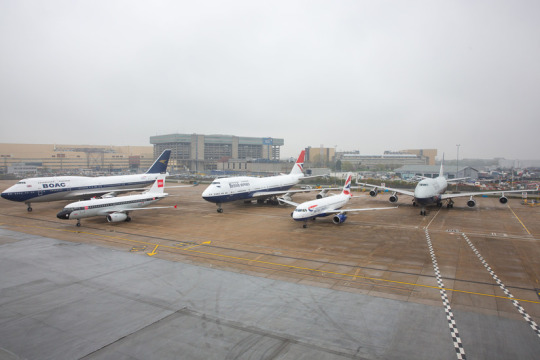
image: British Airways
There is a reason that two of British Airways' fleet of retro liveries wear wordmarks that say other names. To discuss the history of the British Airways livery, I have to first begin by discussing the fact that British Airways...is a weird airline.

British Airways. IATA code BA, ICAO code BAW, callsign SPEEDBIRD. Flag carrier of the United Kingdom.

Honestly a better logo than at least 40% of actual airlines.
Well, it's actually a subsidiary of the unimaginatively named International Airlines Group, Europe's third-largest airline holding company, below Ryanair and the Lufthansa Group but ahead of Air France-KLM. IAG is a member of the oneworld alliance and is the parent company of British Airways, Iberia, Aer Lingus, Vueling, and LEVEL, and just last year acquired Air Europa and began the process of absorbing it away from SkyTeam. To anyone who may have had the thought enter their head: yes, they do now basically have a monopoly on Spanish airlines. To any Spaniards reading, my condolences. At least you still have EasyJet.
Their largest shareholder is Qatar Airways, so when you really think about it British Airways is kind of a subsidiary of Qatar Airways a little bit. Their share is still only 25%, though, so that actually just completely isn't true, but in a vibes sense it feels that way from the outside looking in. Of course, all these airlines have maintained their own identities and operate independently. This is not a LATAM situation. British Airways adopted its present-day livery long before it merged with Iberia to form the IAG in 2011. I'm still not totally sure why they did that. Maybe they wanted to one-up Air France. Iberia's not exactly KLM, but - no, this is not that post.

British Airways. I've always thought it was a little bit strange that it was called that. Few places love reminding the world they're at least nominally still a monarchy more than England. KLM isn't the only airline with 'Royal' in the name - Royal Air Maroc, Royal Jordanian Airlines, and Royal Brunei Airlines are just a few other examples. And yet the United Kingdom has never had an airline, at least not a major one, named anything like The Queen's Royal Air Fleet, which is what I would have expected of them. No. British Airways.
There's not much gravitas to that, is there? Not really any punch. Nothing making it better than Air France. 'British Airways' is a pretty sterile name for a flag carrier.
Their callsign is SPEEDBIRD, though. And that's not sterile. That's awesome. That's Europe's equivalent to Pan Am's CLIPPER or China Airlines' DYNASTY, just pure style. But what is a speedbird, other than a really cool name for a jet?
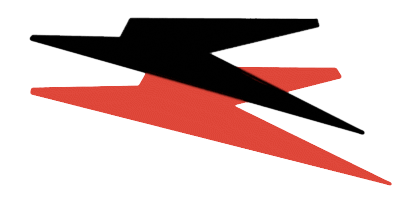
This is a speedbird. Rather, this is the logo for Imperial Airways. Not to be confused with the very strangely named 1964-1986 Californian commuter airline Imperial Airlines, Imperial Airways was a very early precursor to what British Airways is now. In the inter-war years it served destinations like South Africa, Hong Kong, and Australia - the sorts of places two dozen or so wealthy individuals of power might have reason to go quickly. Unlike Imperial Airlines, Imperial Airways had a very fitting name.
So here's another weird thing about British Airways: it's young. Really young for what it is. Most flag carriers are pretty old, and the few exceptions are airlines founded in the 21st century to replace flag carriers which went defunct in the 90s and on, like Brussels Airlines or ITA Airways. Even when you discount centenarians like KLM and Finnair, most of the names you'd recognize in the rest of the world (and plenty you probably haven't heard of) existed by the 1940s, with the major Axis powers being forced to reboot theirs in the 50s. Even the places Imperial Airways served, despite not having the resources of an empire at their disposal, have far older flag carriers. British Airways didn't exist until 1974, making it younger than my mother, the Boeing 747, the Twin Towers, 2001: A Space Odyssey, and the moon landing.
The primary reason for this was, as far as I can tell, bureaucratic shuffling about, but I'm not especially well-versed or interested in the history of UK corporations so that's where I'll leave this bit off. It is possible, and indeed likely, that someone reading this has the urge to say that I'm being uncharitable and that British Airways is functionally just BOAC or BOAC is just functionally Imperial Airways (or maybe nobody thinks that - I simply don't know enough about the corporate side of it to confidently dismiss the possibility of this indeed being the case). It's just not relevant because I'm ultimately here to talk about the airline as an entity in the public eye that has a livery, and in this sense Imperial Airways, British Airways, and the intermediate steps are fully distinct. So, for my taste, British Airways began operations less than a month before the release of the novel "Carrie". That's strange. British Airways is strange.
Still, even though in most other cases the process was significantly faster, very few flag carriers we'd recognize today were founded outright in their current state.
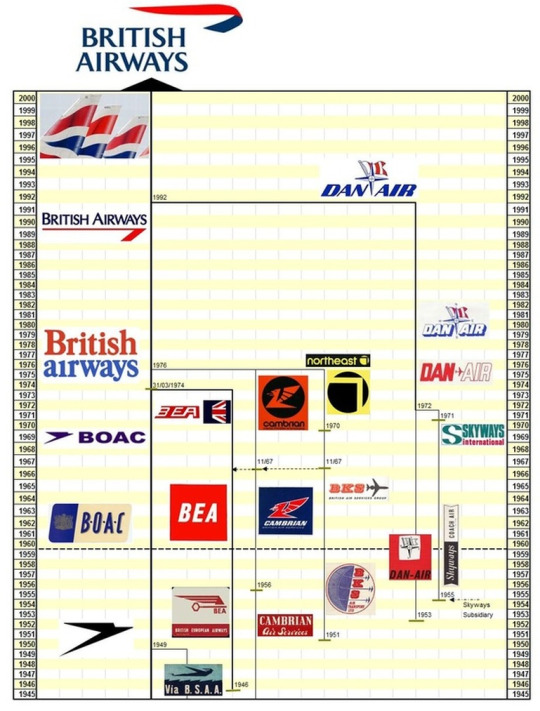
This timeline, compiled by Yesterday's Airlines, documents the 'family tree' of airline mergers that has built up today's British Airways. It actually goes back far earlier. Debatably it began with manufacturer Airco and its subsidiary airline Aircraft Transport and Travel, founded in 1916. Though it went under in 1920, its assets were repurposed by Daimler Airway (singular), which was one of the four airlines (mostly all subsidiaries of aircraft manufacturers) which in 1924 became Imperial Airways. That's right, even the building blocks on this chart are themselves built from blocks!
There are plenty more long-forgotten airline mergers beneath where this graphic cuts off, but this is all to say that the speedbird emblem originated with Imperial Airways, and it has floated to the top of this soup of assorted vaguely British brands, many of which nobody has thought about in decades. Speedbird aside, British Airways resembles basically none of its component parts in any ways that aren't just explained by them both being British, and Airways.
The speedbird was created by notable art deco designer Theyre Lee-Elliott, who created several pieces of iconography and many graphics and posters for the UK government, among other things, like the first-edition cover of "A Farewell to Arms" that an English teacher of mine once had as a poster on her wall. Much of his early work was for airlines, and the speedbird happened to stick.
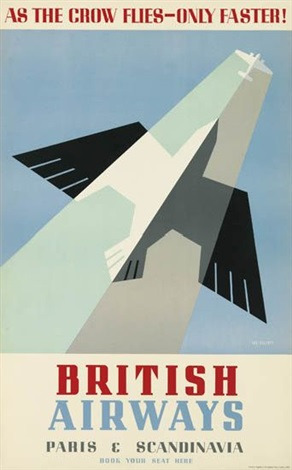
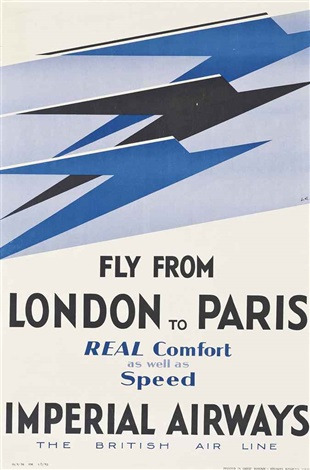
Left poster isn't anachronistic - 'British Airways' was the name of a late-30s airline, itself merged from three other airlines, which would go on to join Imperial Airways as one of the components of BOAC.
Airlines didn't really have liveries as we know them now back when the speedbird was invented, so it would lie dormant as an emblem used on posters and signage for a little while. It was the only part of Imperial Airways' identity which survived when, in 1939, it merged into the British Overseas Airways Corporation.

'British Overseas Airways Corporation' has the same nostalgic punch to it as 'Pan American World Airways'. It was almost always just called BOAC, though, even in the wordmarks of its airplanes. When BOAC came into being the airplane livery was not what it is today. They began with just a painted tail and cheatline, scarcely worth showing or commenting on.
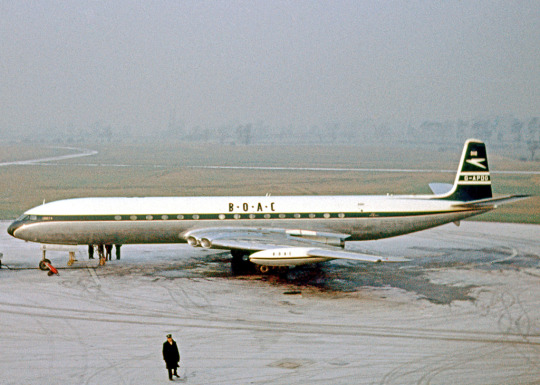
image: RuthAS
Okay, I'll show it, but I don't think it needs any further comment.
There's only one BOAC livery that was really recognizable a BOAC livery. It was still fairly boring. More like BOA(rin)C(g). (That one needs work.)
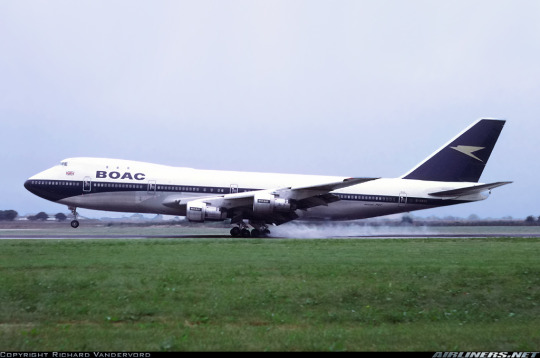
The only interesting thing about the BOAC livery, to me, is the way that sort of face mask shape combined with the tail almost gives it a sort of diagonal symmetry - the front with a blue dip below the white center, the end with a peak above it. It is a very efficient and deceptively effective, potentially unintentionally, use of geometry. I also appreciate the restraint of sticking to blue and white and leaving out red. The minimal nature of it increases the geometric feeling, really saving this livery from my complete disdain. The speedbird logo is really well-centered on the tail, feeling almost like a diagonal slash cut right through it, and I like the use of greyish gold instead of white, which makes it appear less jarring while still being clearly visible. For its day, these positives are certainly not to be fully ignored, though saying that this is a pretty alright 60s white-and-blue cheatline livery is not that high of a compliment. It is cleanly done but in no way exceptional, with a neat bit of art deco angularity to it that you really only notice if you stare at pictures of airplanes as a hobby.
On the other hand, it has a nothing wordmark that honestly just irritates me by breaking up that big clean white block in the same way an old scratch breaks up the flatness of an iPhone screen and it does that thing I hate where a cheatline sort of just...trails off under the tailplane that a fair number of 747 liveries do. It feels like they just couldn't think of anything to do with the end of the plane, which is never what you want from a livery, especially not from an airline that takes itself as seriously as BOAC did. It also uses the isolated tail block, which is a design feature I dislike. At least the extreme matteness of BOAC's midnight-blue-on-white makes it a bit less awful, and the white forward trim is a nice touch.
On balance, I'll give it a BOAC-. That is referring, of course, to the face mask livery, which I think is straddling the fence between 'adequate' and 'forgettable'. I truly have so little to say about the earlier liveries that I'm not going to even give them a grade.

The BOAC livery briefly flew again in 2019 (which British Airways claims to be centenary based on the foundation of Aircraft Transport and Travel, except I've mainly seen that said to be 1916 and most people's consensus is that British Airways was founded in 1974 and no earlier) when it was painted on the 747-400 registered G-BYGC. She was the last 747 to fly for British Airways, just a year after the livery was applied, and there were plans to preserve her in the heritage livery which never materialized. Sadly, she was scrapped in late 2023.
But there was that speedbird on the tail! The speedbird was so damn iconic that it was even BOAC's callsign. So where did it go?
We'll get to that. There's more to British Airways than BOAC.
BOAC was state-owned, and it held a place of national prominence...so it was the flag carrier, right?
Sort of. It was a flag carrier. BOAC was the UK's Pan Am, specializing in long-distance international flights (hence 'overseas' in the name). There was also British South American Airways, a short-lived national carrier which was absorbed into BOAC after two years, with its most notable contributions to history being the disappearances of its planes Star Tiger and Star Ariel, but a significantly more enduring brand was BEA.
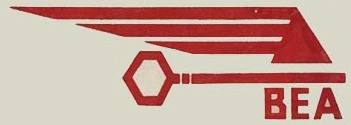
This initial logo, also the work of Theyre Lee-Elliott, had a key motif to accompany BEA's slogan, 'the key to Europe'. I adore it. I like BEA a lot.
While initially founded as an offshoot of BOAC (which I suppose was the singular flag carrier from 1939 to 1946), British European Airways Corporation specialized in, as the name implied, flights within Europe (and other relatively nearby destinations). It was something of a VASP-and-VARIG situation. Nobody ever called it BEAC, though, even though it sounds like 'beak' and birds are a whole thing, because...flying...well, look, we can all understand, in retrospect, that one of the great tragedies of aviation history is that I wasn't there to have ideas. That said, maybe it's a good thing I never planted this seed, because their callsign was BEALINE, which is...just the most adorable thing I think I've ever heard. It genuinely makes me smile. It may be my favorite ever callsign.

They did eventually change their official name to just British European Airways. Sort of a shame, if you ask me - you could have been twinsies. Ah, well. Also a shame is the perplexing choice to shelve their rather nice and meaningful original logo and replace it with what I can generously describe as 'a square' in 1957. I think SAS did it better. I can't rule out that I just hate it because the old one was so much better, though. I've seen far uglier, but again - this is a square.

image: Adrian Pingstone
When it's on the livery, it's not even well-aligned! And it's difficult to imagine negotiating this onto an aircraft tail, even when dealing with a generously square fin like the Trident's. (BEA loved their Tridents, which were essentially designed for the airline's operations, and operated 70 of the 117 airframes completed. This makes me like them, because I love the Trident too.) That said, I think that if you're using a logo that is just the name of your airline, putting it on the tail rather than the front side fuselage is a bold move. Today it rarely pays off, but in the era of cheatlines and half-bare planes it actually avoids the issues of legibility and vertical space that a lot of other contemporary liveries struggled with.
Still, the square. It will simply never not look strange to have two straight vertical lines on a fin that's more or less diagonal to them, and I'm not sure how that could be fixed. They did the best they could, I think, but this was just doomed from the start.
On the other hand, I do enjoy its placement within the cheatline. It helps keep a sense of pace but doesn't break up the line, and it just feels like it clicks into place in a way I love. I like the continuity with the black line at the tip of the horizontal stabilizer, and I like that the white paint doesn't extend down as far as on a lot of liveries of the time, leaving the cheatline to taper above the Trident's rear-mounted engines instead of underlying them as many other airlines' did.
This logo and livery were designed by Mary de Saulles, who was trained as an architect rather than a graphic designer. I think it shows in the very simple shapes and lines present here, and it also shows in the fact that despite it technically not doing anything too unusual the BEA livery was very distinctive when actually on the apron.
BEA's liveries weren't terribly more innovative than BOAC's at first glance. But their black-and-red 60s livery was actually, deceptively, a standout of the era.


images: Ralf Manteufel | Adrian Pingstone
The red wings on BEA's aircraft were absurdly stylish. There are dozens of reasons involving weight and heat and aerodynamic properties that prevent airlines from painting the wings on their airliners anything but a very dull drab, and I despise it, but when even the all-black Air New Zealand plane has white wings it begins to feel like it's just not possible to do anything else. Actually, it is hypothetically possible, though expensive, as long as you avoid the leading edges, though I'm sure the margins for shape and weight of a wing are far more precise on a 787 than they were on a Viscount. Still, I can't help but wish airlines would swallow the costs of painting wings (not like liveries aren't already a needless expense if you're trying to really optimize), because just look at this. It's absolutely stunning. It brings BEA's livery all the way from completely forgettable to by far the most eye-catching in the approach pattern.
And, you know what? I'll give them a BEA for that.
It might seem like a bit of a strange evaluation when I spent two paragraphs complaining about that square, but just imagine being on the ground and seeing a Comet landing, the lack of underwing pylons leaving that big red wing, like the lining of a cloak. That's a real Riyadh Air first impression. So while yes, the square is a square and certain aspects of the livery's implementation on various models range from forgettable to clunky, I am disregarding all of that, because this is like Dracula showing up to a board meeting. They are literally flying Louboutins.
BEA's livery and branding evolved over time in a way BOAC just didn't. BOAC never had anything I would identify as a 'rebranding' - it sprang fully formed from the Queen's (or something) head and stayed in its pristine state until the day it abruptly vanished. This was not quite the case for BEA.

image: Adrian Pingstone
This is a preserved airframe, hence the very anachronistic car models in the foreground. Still, the livery is accurate.
Their final livery, introduced 1968, was this - the 'speedjack' livery. The speedjack is, more specifically, that delightfully pointed Union Jack emblem on the tail. I do like the speedjack itself, being one of the only decent uses of a Union Jack base I've ever seen. It feels obvious yet brilliant to turn the intersecting lines of the flag into an arrow shape. Unfortunately, far more was changed than just the logo.
My beloved flying Louboutin was gone. They still sometimes had the red wings at this point, but in every other way it was a new livery. I actually find that something is lost here, because the old BEA livery had red but not blue, and the BOAC livery had blue but not red, so they were sort of a matching set. Also, um, that wordmark is legitimately hideous.

It's a bit less horrible when it's not red letters on a white background, at least. And it does have a forward slant, a continuity...but this lacks the brilliance of Lee-Elliott's key or the charm of the de Saulles square.
The speedjack, logo, and livery were created by FHK Henrion, whose work has appeared on this blog before, though I failed to mention it. He designed the KLM crown logo!
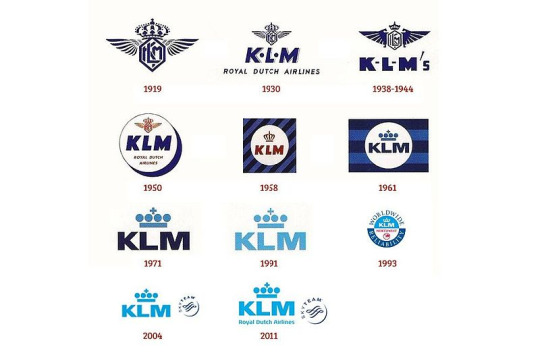
...a logo I used to think was fine until learning about the absolute beauty they had from 1930 to 1938. Henrion designed the totally palatable 1961 version, and further modifications were made by the firm Henrion, Ludlow & Schmidt, with at least the 1991 change being the work of Ludlow. It's certainly gone downhill, but maybe I just think that because of how much I adore the 1930 iteration.
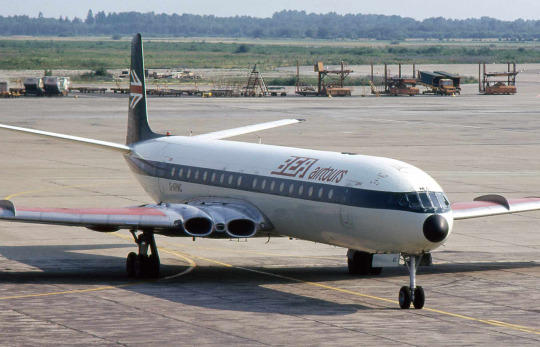
image: Piergiuliano Chesi
As for BEA - at the very least they kept the red wings. This is sort of a double-edged sword, though. This livery was, overall, far less distinct from its surroundings than the de Saulles livery, and the addition of the lighter blue to the fuselage really dulls the impact of the red against the stark black it used to share the airframe with. It just feels...flat. Neutered. Like an interim livery when one airline has bought out another and the paint jobs are changed out piecemeal. (And I think a red-only speedjack on a black tail would look fantastic, for the record.)
The details aren't much better. The cheatline feels almost too thin for the cockpit windows and the tiny wordmark makes the white fuselage feel as empty as it is without the little BEA logos making sure that isn't what you're focused on. Some models, like the Trident Three and Super One-Eleven, get their status indicated by text on the tail that looks like the default font of a word processor. It's just sloppy. Henrion's effort went to the speedjack, where a firm which specializes in image identity generally would be directed, and some interest was taken in the wordmark, but the livery itself feels like a pieced-together afterthought.
This gets a grade of...please just go back. I want to say D+.
How much of that grade comes from genuine dislike of the Henrion livery versus just thinking it's worse than what came before, I don't know, but it's one of the most immediate downgrades I've ever seen and the attempt to keep the most striking feature of the old livery while sapping it of its power feels almost insulting. It feels messy and pieced-together, and it's angling dangerously close to having the same approximate color layout as the old SAS livery - you know, the only thing that's ever failed the Star Alliance Test.

And, at least from the side, and from farther away, it really doesn't fail the Star Alliance Test. It's serviceable, and I wouldn't be nearly this harsh on it if I didn't know what came before. But I've committed to a chronology of what would become British Airways, so I have to mention both, and that includes looking at them, reading about their design processes, and forming detailed opinions of them. This livery was just doomed by its predecessor.

Even British Airways seems to agree with me, given that when they painted an A319 (G-EUPJ) in a BEA retro livery they chose the older black-and-red. Some liveries are simply iconic. Some simply aren't.
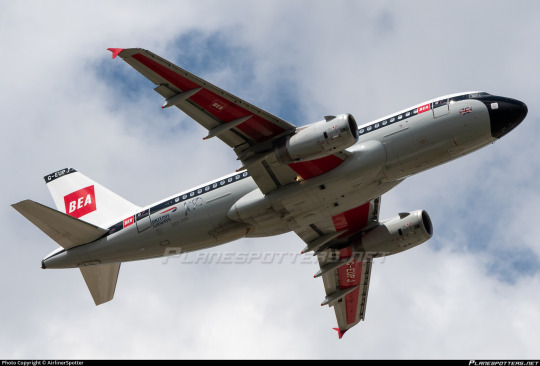
And, yes - the wings are red. At least, the bottom is. The top was forced to remain grey for reasons of 'reflectivity', which is fairly vague. Still, this should be a sign to other airlines - your planes will make an impression from below, and that impression could be as powerful as the one BEA used to make.
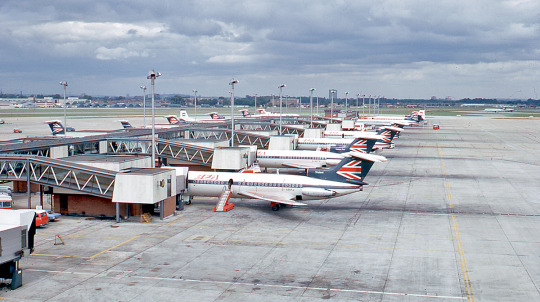
image: Ben Brooksbank
BEA, at its height, flew more passengers than any other airline in Europe. It had subsidiaries, including...Cyprus Airways. (Yes, the same one that's still the flag carrier of Cyprus. That's its own story.) They even operated helicopters.
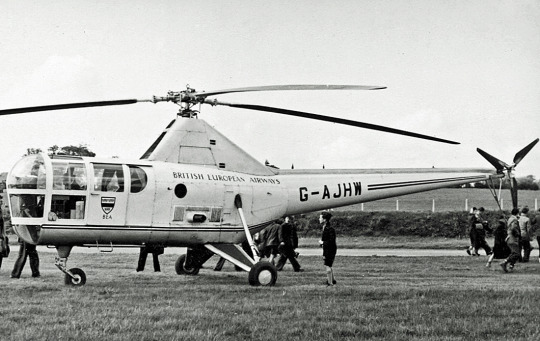
image: RuthAS
Cursed? You decide.
And then, as the 70s began, the decision was made to merge the two state-owned airlines - something which I would personally have done earlier, and apparently people did try to do earlier but were prevented from doing by...politics. You know, just a couple people with titles that begin with 'Secretary of' passive-aggressively fighting over financial things. In 1974, what was probably inevitable finally became a reality.
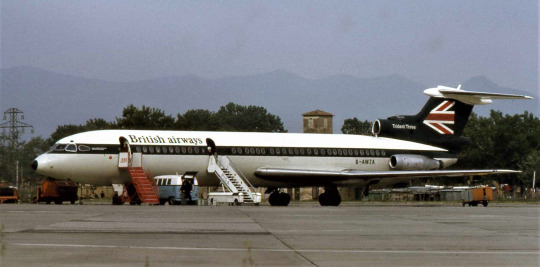
image: Piergiuliano Chesi
It takes a while to repaint a full airframe. When two airlines merge the change is often done bit by bit, making sure the wordmark's right but not bothering with the rest. In 1975, G-AWZA, pictured here, still wore the speedjack, but the wordmark above her cheatline said something new entirely, and a new airline was using the callsign SPEEDBIRD.

And this is where I will conclude today, thwarted by image limit. Of course, being the person I am, I couldn't help but make my return for the new year not just a two-parter but a three-parter. Having dispensed with the British Airwayses that weren't British Airways, part two will cover the British Airways of the surprisingly recent past.
In the meantime thank you to all readers, old and new. I'm thrilled to be back from my break, and I hope you'll stick around for another year of Runway Runway.
#tarmac fashion week#region: west/central europe#region: united kingdom#grade: a#grade: c-#grade: d+#british airways#british european airways#boac#double sunrise#era: 1950s#era: 1960s#era: 1970s#klm royal dutch airlines#imperial airways#long haul
34 notes
·
View notes
Text
Facts
The Palestinians have a history of duplicity and treachery towards Arabs and Muslims who once unequivocally supported them I’m not going to be too detailed on this as all of you can check and verify .
1. The first example was when Arafat tried to overthrow the Jordanians. In what became known as Black September 1970 . King Hussein of Jordan called in the help of Pakistan ( that’s right , Pakistani troops under Brigadier Zia al-Haq ) and together they defeated the Palestinians. 25,000 Palestinians were killed and tens of thousands kicked out from Jordan to Lebanon and Tunisia.
2. In Lebanon in 1976 the Palestinians then tried to overthrow the Lebanese government . Using exactly the same barbaric tactics they used on October 7 , the Palestinians butchered hundreds ( probably thousands as number of deaths never accounted for accurately) of Lebanese civilians at Damour . The Lebanese Christians fought back and thousands of Palestinians left for the Gulf states .
3. In Kuwait the Palestinians who had been extraordinarily well treated there inexplicably supported the 1990 invasion by the Iraqi megalomaniac Saddam Hussein and tens of thousands of Palestinians were kicked out by the Kuwaitis who having received help from the USA defeated the Iraqis and Palestinians . The irony is that those Palestinians who went to Iraq before the Kuwait invasion were treated appallingly by the Iraqis who resented their presence. Numerous Palestinians were killed by Iraqi civilians in Iraq - only rarely reported in mainstream media but regularly reported in the Arab press at the time and by UN NGOs when they took responsibility for Palestinians in refugee camps after the failed Iraqi Kuwait invasion
4. In 2007 Hamas supported by the Muslim Brotherhood defeated Fatah who had previously represented all Palestinians in Gaza . Thousands of Palestinians on both sides were killed .Both Hamas and the Muslim Brotherhood were then disciplined politically and militarily by the Egyptian Sisi administration who they had tried to displace
5. In the last decade the Palestinians have supported the anti Syrian militias fighting to overthrow the Assad government . Over 5000 of 600,000 killed are Palestinian and 1,2 million refugees are in camps .
Naturally such historical facts are never presented to nor explained to the general public by mainstream media . The Palestinians are in fact detested by millions in the Islamic world . Much of the supposed support is to placate domestic audiences and not to expose their true contempt nor their willingness to normalise relations with Israel . Many Arab Sunni countries are in fact lowering their previous support for Palestinians recognising that normalising relationships with Israel is pragmatic and economically and militarily more beneficial……. The Palestinians have paid and will pay a huge price for supporting non Arab Shia Iran and their proxies against their previous Arab Sunni benefactors
Peter Baum
@baum_p
52 notes
·
View notes